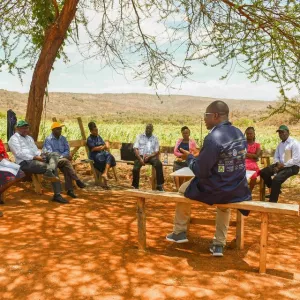Climate Security Case Study: Climate Security Observatory
These are the questions addressed by the Climate Security Observatory (CSO): a decision support tool developed by the Alliance, to support stakeholders in understanding and responding to climate-related security risks. Extensive research – both Alliance-led and external – shows how climate variability and extreme weather events can significantly aggravate existing drivers of conflict and can indirectly exacerbate underlying challenges and

Climate Security Case Study: Climate Security Observatory
These are the questions addressed by the Climate Security Observatory (CSO): a decision support tool developed by the Alliance, to support stakeholders in understanding and responding to climate-related security risks.
Extensive research – both Alliance-led and external – shows how climate variability and extreme weather events can significantly aggravate existing drivers of conflict and can indirectly exacerbate underlying challenges and social tensions. For example, communities with ongoing difficulties accessing water may be forced to migrate due to increasing drought, putting their livelihoods and social networks at risk; or, if communities choose to remain in increasingly water-insecure regions, existing socioeconomic inequalities may be reflected in unequal access to water, thus increasing social tension and perhaps leading to conflict. The threat of climate variability on human security is particularly concerning in regions with existing social tensions, marginalized communities, and high levels of inequality, which already undermine social cohesion. Therefore, a vicious cycle between climate and security exists, whereby climate exacerbates root causes of fragility and conflict and fragility and conflict make people more exposed and vulnerable to climate impacts. However, there is still insufficient policy-oriented research on the mechanisms that link climate to security to guide policymakers in targeting and prioritizing areas and populations that are affected by compound risks of climate and security.

